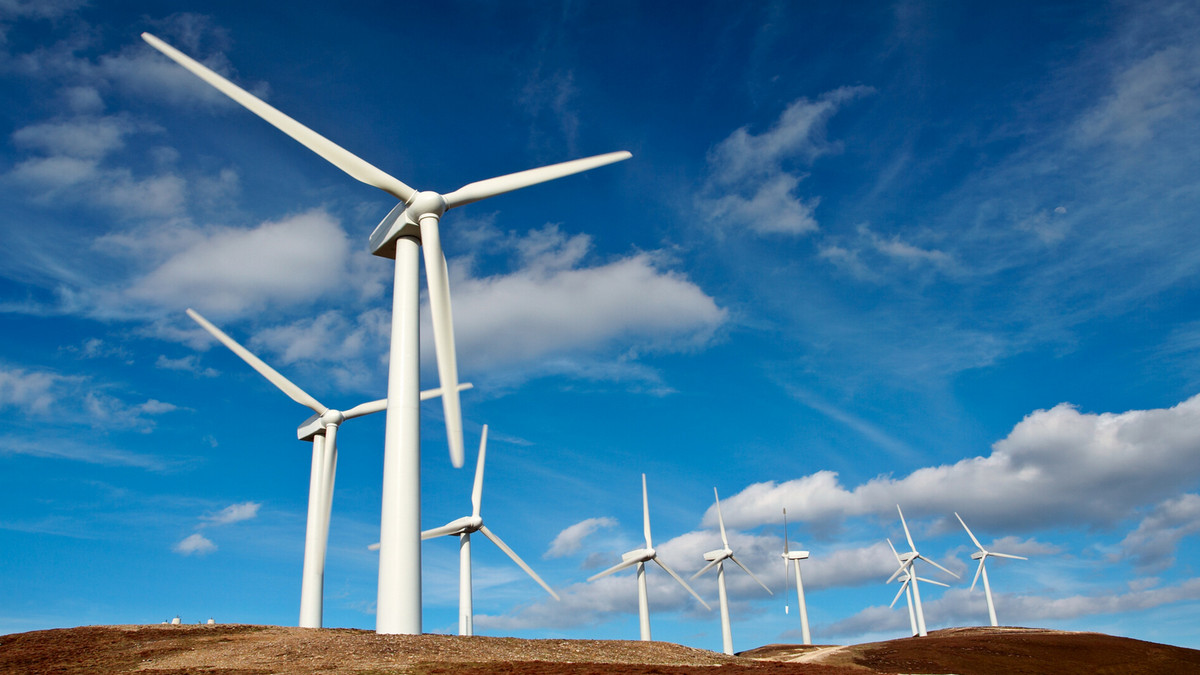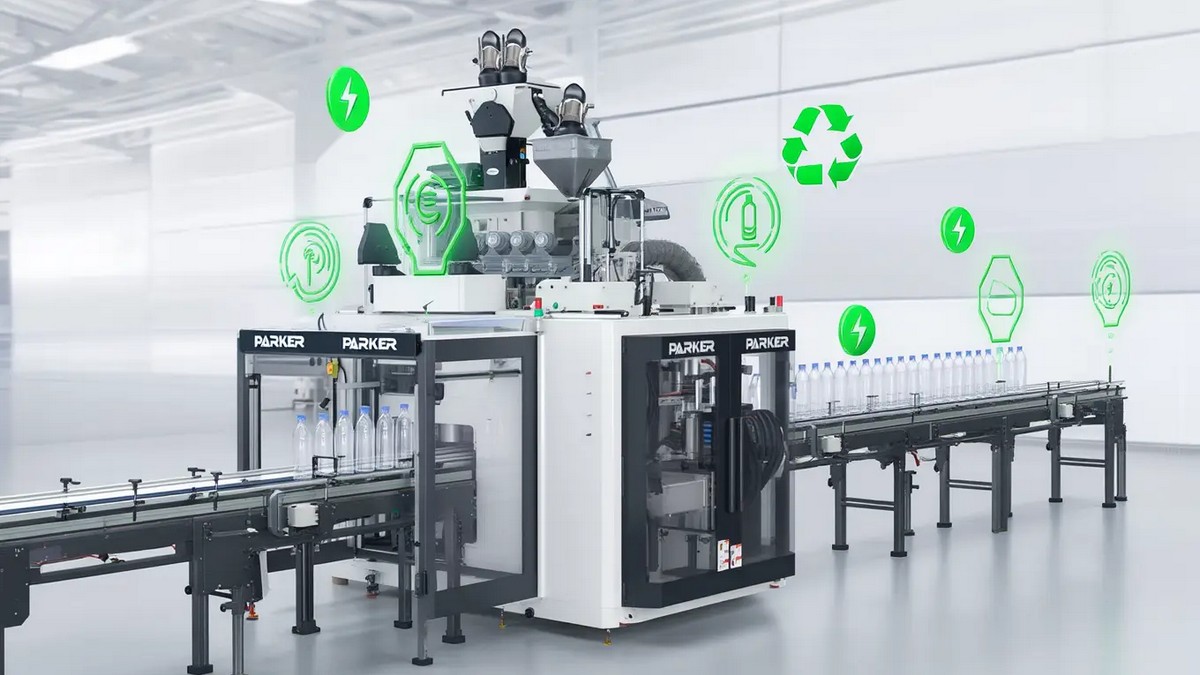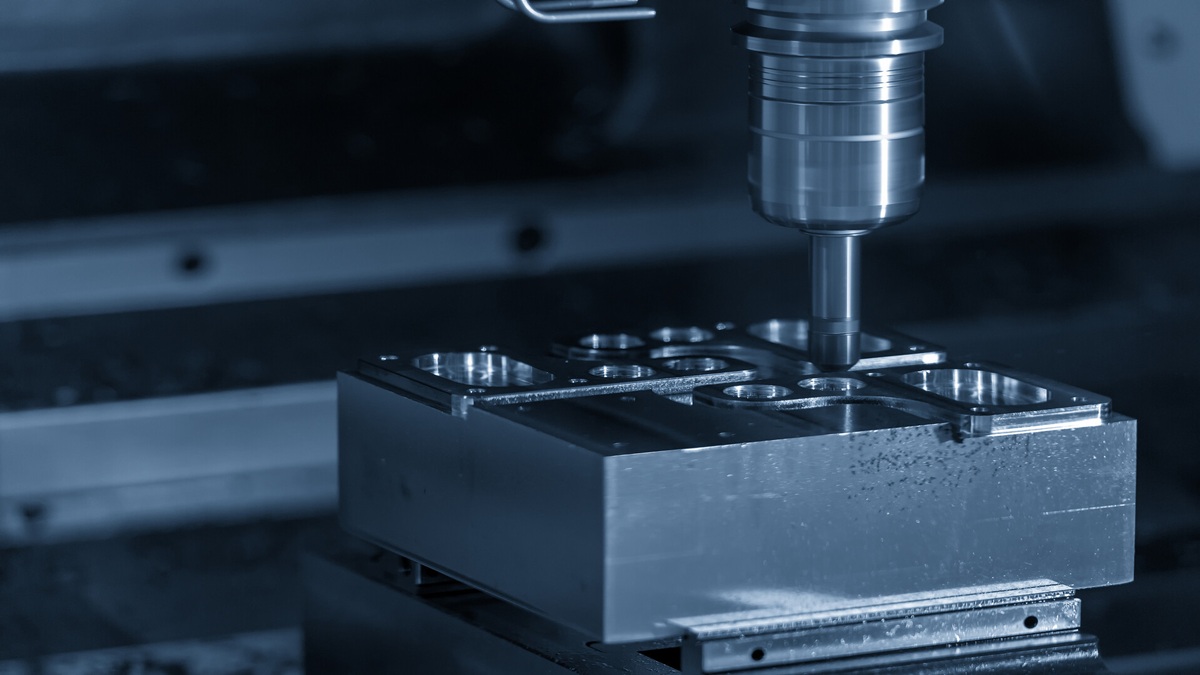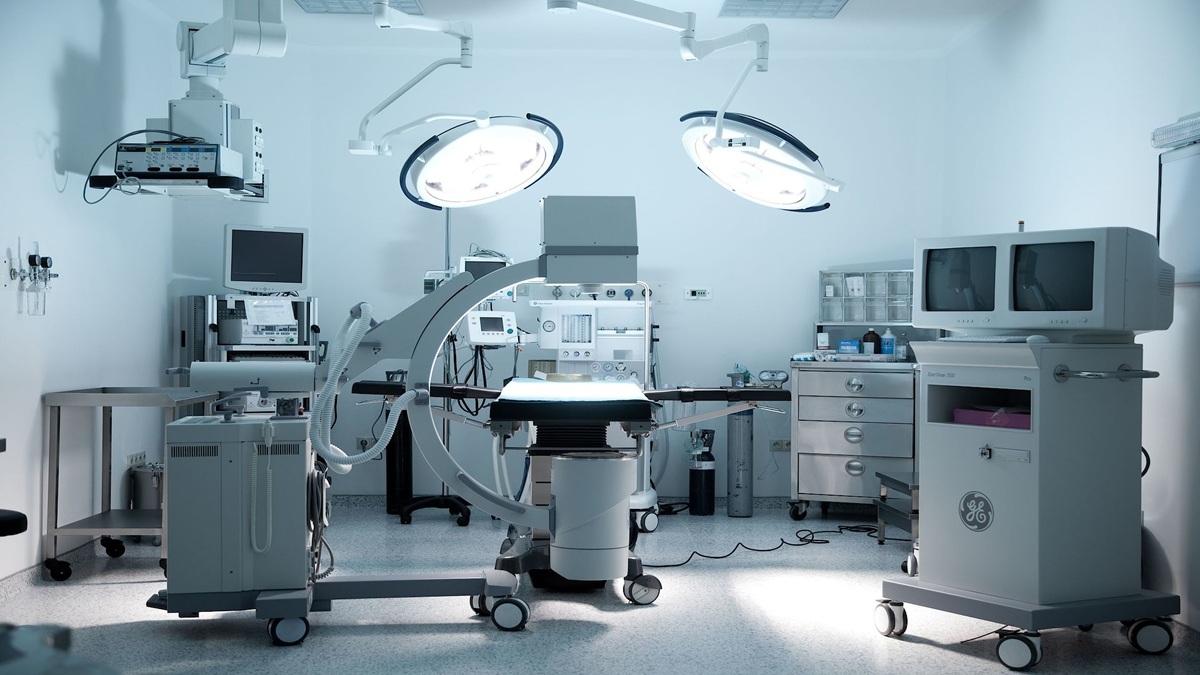Under the rising concept of sustainable development in the world, while responding to carbon neutrality, energy transformation is the goal of global common development. In recent years, offshore wind power has become the focus of renewable energy. While Taiwan's offshore wind power industry is about to catch up, mature European countries have begun to discuss the issue of decommissioning wind turbines.
In 2021, the new installed capacity of global wind power will hit the second-highest record in history, especially the new installed capacity of offshore wind power will grow strongly. In 2010, the annual new installed capacity of global wind power generation needs to exceed 370GW.
Offshore Wind Power has Become an Indispensable Key Development of Energy Transformation
With the rise of the concept of sustainable development around the world, green energy, renewable energy, or energy transformation have become familiar keywords in recent years. They are not only the industrial goals supported by various countries but also the direction that enterprises need to respond to in the future. Looking at the international market, more than 300 corporate members around the world have joined RE100 and pledged to use 100% renewable energy. The RE100 is an international initiative jointly established by The Climate Group and the Carbon Disclosure Project (CDP) in 2014. Companies and non-profit organizations that join must publicly commit to using 100% renewable energy by 2050 and set a date of 60% progress by 2030. It can be seen that energy transformation is not only a policy slogan that the government responds to but also a common goal of global enterprises or organizations.
What is offshore wind power?
Offshore wind power is a form of wind power. Wind power generation refers to the conversion of wind energy moved by airflow into mechanical energy through wind turbines, and then from mechanical energy into electrical energy. According to different installation locations, it can be divided into a land area (or onshore) wind power generation and offshore wind power generation. In other words, offshore wind power generation means that the blades of offshore wind turbines are blown and rotated by the wind, and then drive the rotating shaft and gearbox to rotate to generate mechanical energy for power generation. Therefore, if an offshore wind turbine is compared to the structure of the human body, the blades are the arms of the wind turbine, which convert wind energy into electrical energy. The wind turbine nacelle is the heart of the wind turbine. It not only can effectively convert wind energy into electrical energy but also can control the blades by the command to temporarily stop the blades to protect the wind turbine when the wind speed is too fast. The tower is the spine of the wind turbine, providing support for the wind turbine. The underwater foundation of the wind turbine can make the wind turbine stable in the sea.
Global Offshore Wind Power Market Size
According to the "Global Wind Energy Report 2022" released by the Global Wind Energy Council (GWEC) in early April 2022, the new installed capacity of onshore and offshore wind power in the world in 2021 will be 93.6GW, the second highest record in history. The cumulative installed capacity of wind power generation in the world has reached 837 GW. Among them, the capacity of land-based wind power installations increased by 72.5 GW. Although the installed capacity demand in China and the United States decreased by 18% compared with 2020, it hit a record high in other regions, such as Europe, Latin America, Africa, and the Middle East. They grew by 19%, 27%, and 120% respectively. On the other hand, offshore wind power will hit a historical record in 2021, with newly installed capacity reaching 21.1GW, an increase of more than three times compared to 2020, mainly driven by a large number of built offshore wind power in China.
The wholesale tariff system (FiT) and the green power certificate system have been the main driving forces for the growth of the global wind power industry in the past two years, but countries such as China and Vietnam have terminated the FiT plan, and Sweden and Norway have also agreed to End the green electricity certificate system.
The global reward wind power market development mechanism mainly adopts:
- China promotes the Grid Parity system: The cost of wind power generation is related to the traditional electricity price.
- The United States implements renewable energy production tax credits (PTC) and investment tax credits (ITC) to drive the development of onshore wind power and offshore wind power.
- Renewable energy bidding system in Europe, Latin America, Africa, and the Middle East: Challenges faced by the previous bidding, including permits and market design, need to be resolved.
Although the capacity of global wind power installations has grown significantly in the past two years. The current growth rate is still insufficient to allow the world to meet the goals of the Paris Agreement and 2050 net-zero emissions. To achieve the goal of net zero emissions by 2050, global wind power generation needs to add more than 370GW of installed capacity every year in the next ten years. In terms of offshore wind power, the GWEC report predicts that the global offshore wind power installations will decrease in 2022 and may return to the level of 2019/2020. However, the market is expected to resume growth in 2023 and break through the 30GW mark in 2026. Overall, it is expected that the installed capacity of offshore wind power will exceed 90GW in the next 2022-2026, with a compound annual growth rate of 6.1%.
The current challenges affecting the growth of the global wind power industry include inconsistent policy environments based on short-term political goals, difficulty in financing the renewable energy industry, imperfect infrastructure, bottlenecks in power transmission, and lack of renewable energy technology-related industries and industries. The threat of disinformation, and more. In addition, complicated administrative procedures, slow review operations, regulatory restrictions, and difficulty in obtaining land are major bottlenecks hindering the growth of the global wind power industry.
From the perspective of the Asian region, India has developed wind power on land for many years but currently has no offshore wind power equipment. In 2021, the country will add more than 1.4 GW of wind power installed capacity. Nevertheless, India estimates that the total installed capacity of wind power needs to reach 140GW by 2030 if it is to meet its climate change commitments. India has a coastline of 7,600 kilometers, which can generate at least 127 GW of offshore wind power. For the construction of offshore wind power in the future, MNRE aims to complete the installation of 5GW of offshore wind power installation capacity by 2022 and reach 30GW by 2030.
Overview of Global Offshore Wind Power Development
The development of offshore wind power began in 1991 when Denmark built the world's first offshore wind farm, which kicked off the offshore wind power industry. The countries that developed offshore wind power in the early stage were concentrated in Europe, among which Denmark and the United Kingdom were the first countries to invest. Germany was the first country in the world to promote energy transformation. Germany began to set up offshore wind farms in 2010. By 2015, 2 of Germany's 16 federal federations can use renewable energy for electricity. In the United States, wind power is regarded as a key policy to combat climate change and reduce greenhouse gas emissions. Plans to double the amount of offshore wind power generation in the United States by 2030. In Asia, although the development of offshore wind power is relatively late, the progress is quite rapid. Asia has grown from almost zero offshore capacity in 2015 to more than 6 GW today. By 2025, Asia's offshore wind power installed capacity will increase sixfold and is expected to reach 52GW. At present, in the Asian wind turbine capacity market that can be operated, China ranks first with 94% and will continue to grow significantly until 2025. The remaining 6% are Taiwan (128MW), Vietnam (105MW), South Korea (99MW), and Japan (56MW). Although China continues to occupy a dominant position, wind farms in Taiwan and Vietnam will have a demand for offshore wind power installations in response to government policy goals. In addition, wind farms have environmental advantages, which are favored by international developers as an object of attention.
According to the "Global Offshore Wind Energy Report 2021" released by the Global Wind Energy Council (GWEC) in September 2021, in 2020, a total of 93 GW installed capacity of onshore and offshore wind power will be added, setting a record high. The installed capacity of offshore wind power and offshore wind power is 86.9 GW and 6.1 GW respectively. It is estimated that in the next five years, the compound annual growth rate of offshore wind power is expected to be 4.0%. In addition, government policy support, such as bulk purchase systems, production tax credits, bidding projects, and renewable energy targets set at the national or state level. Maybe the main driving force to stimulate the growth of installed capacity.
In addition, European countries will continue to be the leaders in the offshore wind power market in the future due to their earliest investment and mature development. Asian countries have considerable development potential in floating offshore wind power, while the United States has considerable scientific and technological strength, and its development should not be tolerated or underestimated. However, 16 of the 20 offshore wind farms with the best wind conditions in the world are located in the Taiwan Strait. Based on this geographical advantage, offshore wind power in various countries has become a key industry for the development of renewable energy. From the perspective of intelligent maintenance and operation technology, advanced material application and recycling technology development, and cross-domain application of offshore wind farms.
Intelligent maintenance and operation technology are imperative. In response to natural disasters and many uncertain factors under the sea, fully automatic robot inspection and maintenance solutions, amphibious robots, have been developed. In addition to reducing manpower requirements, inspections are performed more accurately to achieve good wind farm operation management. The application of advanced materials and the development of recycling technology are based on the fact that in 2030, the wind turbines in European offshore wind farms will face the stage of decommissioning, and 14,000 wind turbine blades will need to be recycled. In the waste production fan project, the UK has also invested in the research of ultra-light fan blades, hoping to reduce the Levelized cost of energy (LCOE). The cross-domain application of offshore wind farms, in the Netherlands and Belgium, mentioned is expected in the future. Biotechnology can be used to produce raw materials for energy substitution and healthy food, and brown seaweed can be planted through offshore wind farms combined with large seaweed farms. In addition, European The country hopes to decompose the excess electricity generated by offshore wind power into hydrogen and oxygen through electrolysis and apply it to transportation, fuel, and industrial purposes, and gradually begin to have the concept of energy creation and energy storage.
Looking to the future
Under the current policy environment, the global wind power market will add about 557GW of installed capacity between 2022 and 2026. By 2026, the average annual installed capacity will exceed 110 GW, with a compound annual growth rate of 6.6%. At the same time, GWEC calls on the governments of all countries to simplify administrative procedures, speed up the progress of review operations, and at the same time formulate new energy policies to promote the rapid development of the wind power industry. In addition, with the development of the wind power industry, it is necessary to cultivate a large number of resources required for the development of renewable energy. Relevant talents, accelerating the construction of infrastructure such as power grids, strengthening cooperation between the public and private sectors, and establishing a clear and stable international regulatory framework to alleviate the uncertainty of energy transition and the threat of competition in international mineral raw materials.
Whether it is a well-developed offshore wind power market or wind power-related start-up companies, can see the epitome of future development that will combine innovative technologies, mainly intelligent applications, such as smart wind farms, cloud real-time monitoring platforms, and through sensors collect data and provide real-time measurement information results, and automated robots assist underwater maintenance and inspection. Advanced materials are applied to wind turbine blades to provide high impact resistance, corrosion resistance, and fatigue resistance to reduce recycling costs. Wind power combined with solar or ocean energy applications. Lightweight or portable wind power generation products can be used in the environment without electricity. In addition, there are more and more applications of energy creation and energy storage. If we can combine the concept of innovative technology under the wave of sustainable development, we can find a competitive advantage in this market.









.jpg)
.jpg)
.jpg)


.jpg)